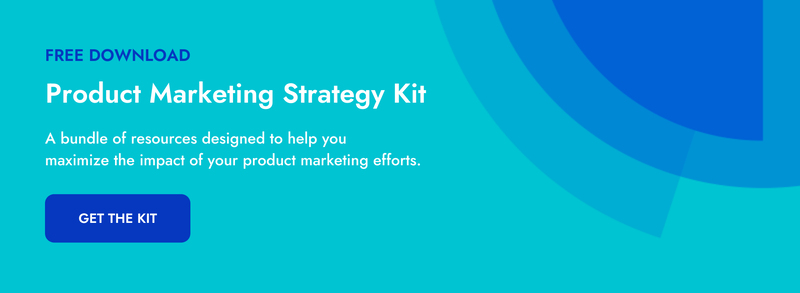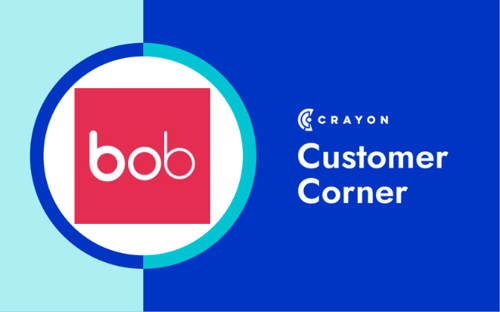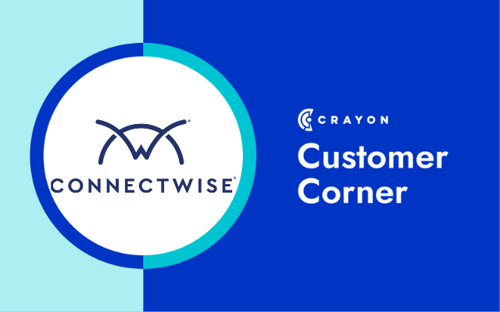 Crayon's Product Marketing Spotlight is an interview series where we chat with product marketers to get a glimpse into their careers and gain unique insight into product marketing strategy. In this edition of Product Marketing Spotlight Series, we shine the light on Ben Austin, Senior Product Marketing Manager at Carbon Black.
Crayon's Product Marketing Spotlight is an interview series where we chat with product marketers to get a glimpse into their careers and gain unique insight into product marketing strategy. In this edition of Product Marketing Spotlight Series, we shine the light on Ben Austin, Senior Product Marketing Manager at Carbon Black.
ED: What is your role?
BA: I’m a Sr. Product Marketing Manager here at Carbon Black. When I started two-and-a-half years ago we had recently acquired our first cloud-native product, so I was mainly focused on building out the core messaging, content, and GTM strategy for that product. Over the last 18 months, we’ve continued to build out additional capabilities to make it a true multi-use-case platform. My role throughout that time has been focused on launching those new products into the market, and enabling the sales team to explain the value of each new solution.
Download our Product Marketing Planning Kit
ED: What does the company do?
BA: Explaining this to family members is always a fun part of working at a tech company, isn’t it? Carbon Black is a cybersecurity company that provides a cloud-native endpoint protection platform for IT and Security teams. Hackers and foreign countries have gotten really good at breaching corporate networks using advanced techniques to avoid being detected by traditional antivirus, so we help those teams replace antivirus with a cloud-based platform that analyzes attacker behaviors to help stay ahead of threats and protect their company’s data.
Patrick Morley, our CEO, always summarizes it by saying that our ultimate goal is to create a world safe from cyber attacks. Working at a company with such a critical purpose has been fascinating, especially in the last few years when cyber security has been a constant topic of discussion on national media.
ED: Tell me a little bit about your career path. What was your first job, and what else happened along the way to bring you to where you are now?
BA: I actually studied journalism at Emerson College, and had an internship at Boston.com for two years. After graduating, while I was trying to decide whether I wanted to stay in that field, I got a job offer from SmartBear Software. SmartBear was just starting to build out an inbound marketing team and needed someone to run the blog and content strategy. I was really lucky to join an awesome team led by Jeanne Hopkins and Prashant Kaw, who gave us the direction and freedom to take risks, be creative, and move fast, which led to some really great results. It was absolutely a “right-time, right-place” situation for starting my career.
After two years at SmartBear, Prashant and Jeanne had both moved on to Continuum and re-hired me to run the content team over there. When a Product Marketing Manager role opened up for a new product we had just launched, I made the decision to move away from managing a team and back to being an individual contributor. Now at Carbon Black, after a few more product launches and an IPO, I feel like I’m hitting my stride in the PMM role.
ED: What is something you wish you knew earlier in your career?
BA: Success is as much about choosing what not to do as it is choosing what to do. Over the years I’ve realized the value of devoting energy into doing one or two projects really well as opposed to doing a dozen little things so-so. It’s tough, especially early in your career, not to get distracted by the pile of smaller projects that get put on your plate. I wish I had that awareness when I was 24 years old and frantically devoted to getting 10 blog posts published each week. Taking the time to create more in-depth content that helped solve bigger problems for the audience could have netted the same down-funnel results with much less effort.
ED: What advice do you have for someone who wants to start a job in product marketing?
BA: Knowing your audience is as important as knowing your product. In Product Marketing you really need to understand the day-to-day lives of the people you’re trying to reach, so spend as much time as you can researching the audience upfront. Join sales team meetings. Go visit a customer in person. Jump in on UX interviews. The more time you spend listening to your audience - and your sales team is part of your audience - the more effective you’ll be at explaining how your product makes their lives better.
ED: What are your favorite product marketing resources?
BA: Honestly, I’m not just saying this, but I love looking through the templates and kits from companies like Crayon and HubSpot. I may not use all of them, but it’s helpful, especially when launching a new program or product, to use those resources as outlines for tools we create internally, rather than building everything from scratch.
ED: How much of your day-to-day involves competitive intelligence?
BA: Cyber security is a highly-competitive industry, so it’s essential to my role to be up to date on our top competitors. Even though we have a person dedicated to analyzing and formalizing competitive information, it’s a daily cross-team effort to collect, share, and distribute useful competitive information.
ED: How do you get your sales team to actually use your sales enablement resources?
BA: This is always a challenge, but we’ve worked hard to maintain good two-way communication between Product Marketing and Sales. In the past I’ve actively sought out feedback about what’s working in the field and what’s not, which helps us prioritize the right content and also helps build rapport. The more they trust that we’re listening and building content that will actually help them, the more likely they are to use new resources that we give them.
One specific tip that I’d give is to make your sales enablement resources as visually appealing and consumable as your outward-facing marketing content. Putting in that extra bit of design work can go a long way.
ED: What sales enablement programs or resources have you found to be most impactful?
BA: We’ve created internal Quick Reference Guides for each product. These look like customer-facing datasheets but include audience pain points, qualifying questions, key proof points, and competitive tid-bits. They’re pretty simple, but they give sales reps a few key talking points that they can rely on as they get comfortable selling a new product.
When trying to inspire sales reps to talk about a new product, I also recommend interviewing the reps that have had early success and turning that information into a playbook that acts as a blueprint for the rest of the team. The big thing here is to make sure they know the information is coming from other successful reps who have made money with those tactics. Half of the battle is just making reps confident that they aren’t going to kill a deal by bringing up a new product that they aren’t as comfortable with.
ED: What’s the best book you’ve read recently?
BA: I’m just finishing up Endurance, which is astronaut Scott Kelly’s biography that centers around his year-long stay on the International Space Station. It was fascinating to read about the extreme level of detail and training that go into every single aspect of that job. It really highlights the importance of preparing for every possible scenario and maintaining complete focus on the job at hand. Even if you don’t geek out about space, it’s definitely a good read.

Related Blog Posts
Popular Posts
-
 The 8 Free Market Research Tools and Resources You Need to Know
The 8 Free Market Research Tools and Resources You Need to Know
-
 6 Competitive Advantage Examples From the Real World
6 Competitive Advantage Examples From the Real World
-
 24 Questions to Consider for Your Next SWOT Analysis
24 Questions to Consider for Your Next SWOT Analysis
-
 How to Create a Competitive Matrix (Step-by-Step Guide With Examples + Free Templates)
How to Create a Competitive Matrix (Step-by-Step Guide With Examples + Free Templates)
-
 How to Measure Product Launch Success: 12 KPIs You Should Be Tracking
How to Measure Product Launch Success: 12 KPIs You Should Be Tracking




